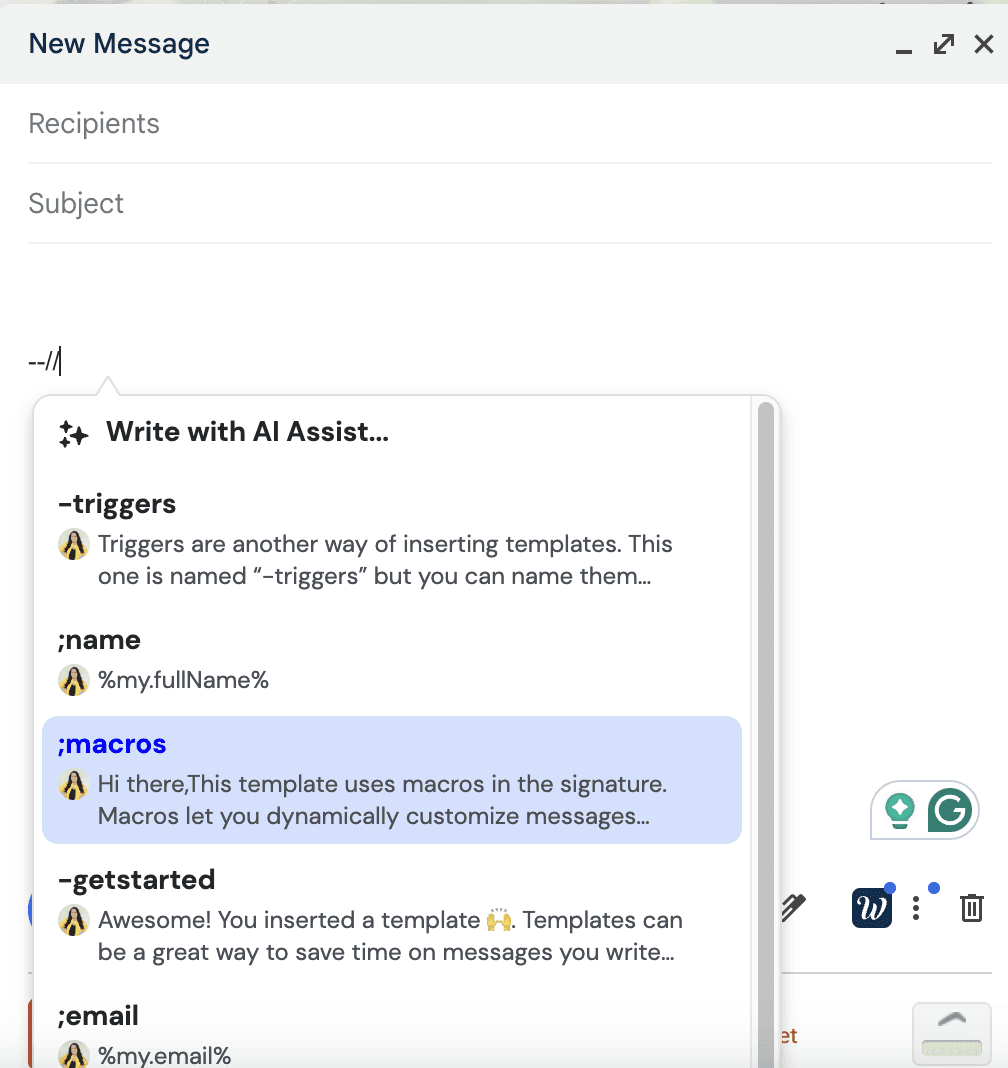Have you ever gotten a sales message for a product or service exactly when you needed it the most? Like any good magician’s trick, the results of successful outbound prospecting might look like magic—when it is, in fact, the consequence of a carefully crafted strategy.
Outbound prospecting (AKA cold outreach or outbound sales) is typically the domain of those in sales and business development. It involves getting in touch with people who may have never heard of you. And while that may sound intimidating, there are certain tactics you can use to make this process simple and successful.
Here’s everything you need to know about outbound prospecting and the ingredients you need to create a winning strategy.
What is outbound prospecting?
Outbound prospecting involves searching for potential customers (or “prospects”) for your business. It’s a direct marketing channel, meaning there’s no intermediary between you and your potential prospect—you reach out to them directly, intending to foster a personal relationship.
But it's not just about reaching out to as many people as possible. Instead, salespeople need a targeted prospecting strategy that positions them to win. 50% of sales time is wasted on unproductive prospecting, so you need to determine how you'll maximize your time connecting with the right people.
What is prospecting outbound leads?
The difference between outbound and inbound prospecting lies in how far you have to stretch your reach.
Inbound prospecting is about attracting leads that have already found you. They may have liked a video or downloaded your ebook, for example. Now that you’ve piqued their interest, your goal is to keep it. Content marketing, targeted email marketing, and paid search advertising fall into the inbound category. These leads have some level of awareness with you, and possibly even some trust.
If you’re going in totally cold, that’s outbound. (You’re venturing out into the jungle and bringing potential prospects in from the wilderness.) It involves:
Cold emailing
Cold calling
Direct mailing
Door-to-door selling
Trade show presentations
Buying advertising space on television, radio, or print.
Outbounding is more like being at a party where you don’t know a single soul and have to work your magic to get conversations going.
The process usually looks a little something like this:
Identify target customers
Reach out to them directly
Introduce your company and its products and services
See if you’re a match
And voilà! You’ve done your job. Now you hand off your list of stellar prospects to your sales team so that they can put them through the sales funnel. (If you’re in a smaller company where the outbound prospecting team and the sales team are one in the same, then you may have to hand all this hard work to, well, yourself.)
What is the goal of outbound prospecting?
Outbound prospecting aims to find prospects that yield results down the line. And this only happens if you can put them into your sales funnel. (Basically, pick them out of the vast ocean and put them in your pond, so they’re easier to catch.)
Sounds simple enough, right? In theory, yes. But, like anyone who’s ever ventured into the world of online dating knows, it’s easy enough to find matches—but not always so easy to find the right matches.
Because here’s the scoop: only 3% of buyers think salespeople are trustworthy. So, if a cold call is met with a cold shoulder, don’t take it personally—it’s wild out there.
Also, the ROI of inbound versus outbound prospecting leaves inbounding far more favored. Inbounding costs 62% less and generates three times the leads.
But that doesn’t mean you should ditch outbound prospecting. Instead, it means doing it smartly. Outbound prospecting will put you on the offensive. You’re not simply waiting for leads to come to you; you’re seeking them out.
What’s more, recent developments in AI and automation have given us more intelligence about who to reach out to. You no longer have to just shoot in the dark or cold call people all day randomly like a telemarketer. With the right strategy and tools in place, you can make sure you’re calling the right people in the right place at the right time.
What is an outbound strategy? (8 crucial ingredients for successful outbound prospecting strategies)
An outbound sales strategy encompasses all aspects of your outbound prospecting activities—from conceptualizing a game plan to integrating it into your larger sales strategy. Here are the key ingredients to make yours a success.
1. Create an Ideal Customer Profile (ICP)
Cold calling/emailing doesn’t mean just calling or emailing anyone. It’s about targeting the most promising contracts—which means that, first, you have to know who you’re looking for.
Map out who your ideal customer is. Search through your current base. See what’s worked and what hasn’t. Draw up a detailed profile of your perfect match.
If you’re in the B2B arena, your ICP might be a specific business size with a particular annual revenue and marketing approach, for example.
2. Build your list of potential prospects

Now that you know who you’re looking for, it’s time to put all your prospects together in one place so that you can streamline your workflow.
Going in with a refined list is better than "spray and pray marketing" that targets too many people at once. You'll spread yourself too thin when marketing to too many people, and your results will reflect it. As Predictable Revenue author Aaron Ross says, "There’s no point contacting hundreds of poor quality leads, just because it’s easy, when you could spend a little longer nurturing several good quality leads. As a sales manager, ensure the metrics you use to measure your team don’t encourage this kind of behavior."
Magical does a lot of this dirty work for you. It seamlessly and painlessly moves data from one website or app to another, without you having to do much at all.
Say you want to compile a list of potential prospects from LinkedIn. Magical will fill in a sheet for you based on info like name, location, headline, job title, and company. This data will then travel from one place to another without you having to enter it manually. What a win!
3. Use prospecting tools to find contact info.
It’s one thing knowing who to reach out to and another knowing how. Since email marketing has 2x higher return than cold calling, it's a great way to prospect and connect. Luckily various tools (Hunter, Anymail finder, and Voila Norbert, to name a few) can help you track down those email addresses.
Prospecting tools will also help you verify whether there’s a person on the other side of an email address so that you know your efforts aren’t going to waste.

4. Make your emails magic.
There are over 4 million email users worldwide, 99% of email users check their emails daily, and 4 out of 5 marketers say they’d give up social media before email. Plus, 89% of marketers use email as their primary channel for generating new leads. So, yes, this is likely not a channel to ignore.
But then there’s the tragic tale of the overfull inbox where so many good emails go to die. How do you get your message read when opening rates for cold emails sit (on the high end) at 28%?
Not to worry. We’ll take you through the ins and outs of crafting a stellar cold email here.

Pro tip: Use AI to help you draft winning emails, saving commonly used templates to speed things up.
5. Personalize your reach as much as possible.
And that means research, research, research. Okay, you may not know all you need to know about this prospect, but you must know something.
As Patrica Fripp puts it, “It’s not your customer’s job to remember you. It is your obligation and responsibility to make sure they don’t have the chance to forget you.” And you don't do that by talking more about yourself or your product. You do that by engaging them with topics relevant to them. Personalized emails improve click-through rates by 14%, and conversion rates by 10%.
Were they in the news for anything? Can you gauge any recent accomplishments from their LinkedIn profile? Do you know anything about their hobbies? Do you have a mutual contact? Did you live in the same area or attend the same college? Hunt for those conversation starters that make the conversation feel organic.
6. Follow up.

Seems simple—but following up is so often forgotten. Don’t get shy if you don’t get a reply. Consider that 92% of salespeople throw in the towel after four 'no's', but 80% of prospects say 'no' four times before they say 'yes'. Even just one follow-up email can increase your response rate by 65.8%.
Treat every customer as a chance to learn more about them and either help them directly or set you up to succeed with a future customer. Although it can be hard to follow up this much and hear so many nos, you'll improve over time the more you listen. Jim Rohn says, “Practice is just as valuable as a sale. The sale will make you a living; the skill will make you a fortune.”
Part of the follow-up is knowing when to stop, though. Personalize each follow up to some extent. Don't keep emailing "Any update?" or "Just following up" repeatedly.
Too many follow-ups, and you’ll likely annoy them, and that may be the end of your potential relationship.
7. Work smarter, not harder.
Use the tools at your disposal. You don’t have to do any of this alone. That means using automation tools.
Magical, for example, allows you to spend less time on written communication through shortcuts for emails and instant messages. This means that you'll never have to type the same thing over and over again. Instead, refine your best messages, add variables for personalization, and save your templates as easy-to-access shortcuts.
These shortcuts can save you a ton of time. The old favorites like, “It’s been my pleasure,” or “I understand,” can now be accomplished with far less fingerwork.
Imagine that you were sending out a blanket outreach email. Instead of typing in the recipient’s name, you can type in an abbreviation like @fname. And instead of typing out a specific email every time, you get to draw on one of your already constructed templates with a simple @email5. Presto!
8. Monitor your metrics.
Of course, you’ve got to know if any of this is working. For email prospecting, things to check are:
Email bounce rate (how many email servers rejected your message)
Email open rate (how many are opened)
Email reply rate (how many are getting back to you)
Whether those replies are angry. 😡It’s important to track whether they’d rather you didn’t contact them. This could be a good indicator that you may not be reaching the right people, or in the right way.
It’s also crucial to track your results further down the funnel. Consider which prospects you brought in through your outbound strategy are still around later down the line. This will also help you determine your Customer Acquisition Cost—how much did it cost to get a customer on board through this strategy?
Luckily, automation tools can help at every stage of this journey. For more info on this, take a look at our list of the top 30+ sales tools and apps.
Outbound prospecting—the bottom line
So there you have it. Think online dating. Think making a magic trick. Think being at a party in a brand new city. That’s outbound prospecting. And although it can sound mildly terrifying, with the right strategy—and the right tools—it’s entirely possible to make it a success.
